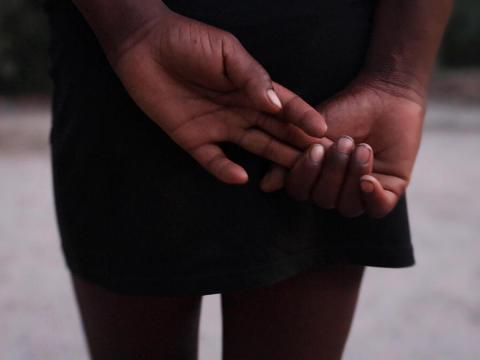The hidden consequences of climate change

By Maria Carolina da Silva, Country Director for World Vision Angola.
Our news feeds are updated with the latest on rapid ice melt, out of control bushfires and rising sea levels. Yet most people haven’t even heard about Angola’s weather disaster that’s driving vulnerable families deeper into poverty.
Angola’s worst drought in 38 years is putting children, particularly girls, at unacceptable risk –and we need to hear about it.
Lack of rainfall has wiped out crops and killed thousands of cattle, leaving farming communities scrounging for water, with no food to eat and nothing to sell. More than 11 million people have been plunged into a hunger crisis across Southern Africa and this is set to worsen over the coming months.
It’s alarming because the burden of three decades of civil war has already left Angola with one of the world’s highest child mortality rates and high levels of malnutrition. Because of drought, rural hospitals in the country’s south report child deaths due to severe malnutrition have more than doubled compared with last year*.
Lack of food isn’t the only way drought harms –or even kills –children.
Nearly 200,000 kids are at risk of dropping out of school. In some rural areas, every school has closed as farming families migrate in search of greener pastures for their starving cattle.
Women and children are taking up the search for water, which is increasingly scarce. They leave home before sunrise and many walk all day, not returning until after dark. They walk alone or only with young children, putting them at greater risk of sexual assault. Sometimes they return home with no water.
Alarmingly, World Vision child protection officers have identified dozens of girls on the border with Namibia, who have resorted to selling their bodies. The economic consequences of drought on rural farming families are so severe, that prostitution is the only way children can afford their next meal.
Girls say most of their clients are cross border traders who pass through the area briefly. They sometimes receive as little as 50 cents (USD) for their work, or are robbed or even physically hurt while attempting this dangerous work. It also puts them at even greater risk of contracting HIV and other sexually transmitted infections. Southern Angola’s Cunene province already has the highest rate of HIV in the country, accounting for 6.1 per cent rate of new transmissions.
Another survival strategy children and their families turn to is child marriage, which often leads to child pregnancy. Girls under the age of 15 are more likely to die during childbirth and girls face a higher risk of complications compared with adult mothers.
So, while a teenage girl called Greta Thunberg has become the face of a global movement in which schoolchildren voluntarily forsake lessons to protest, elsewhere school girls are forced to abandon school to hunt for water or to sell themselves.
These are the real impacts of drought on girls who are already among some of the world’s most vulnerable. They are so remote from us that they are invisible but imagine if your daughter, niece or the teenage girl next door had to endure what is effectively paid for rape in order to feed herself and her family. This should be enough to propel action on a crisis that’s largely unnoticed. As a consequence, the humanitarian emergency response is drastically underfunded.
Children’s lives depend on life-saving nutrition, health and child protection support.
What many world leaders fail to realise is that children now –and not in some future scenario - depend on others doing their fair share to address the climate crisis.
Since 1960, average temperatures in Angola have warmed significantly, with mean annaul temperatures increasing by about 1.5°C since 1960. This has been met with a decrease in average annual rainfall and drought is projected to become more frequent and severe, which will impact crop yields and increase hunger in the years to come.
Climate scientists acknowledge extreme weather, increasingly fuelled by man-made climate change, will become more severe and frequent across Southern Africa. This year alone the region has experienced unprecedented cyclones, floods and now drought.
We know children suffer the burden not only when disasters strike, but the consequences last long after the drought ends.
We must tackle the root cause of disasters if we want to have any meaningful chance of protecting the next generation of girls.
*Ref: Chiulo Hospital. There have been 27 child deaths due to malnutrition between Jan and August 2019. This is compared with 12 child deaths for the same period in 2018.
This blog originally published here